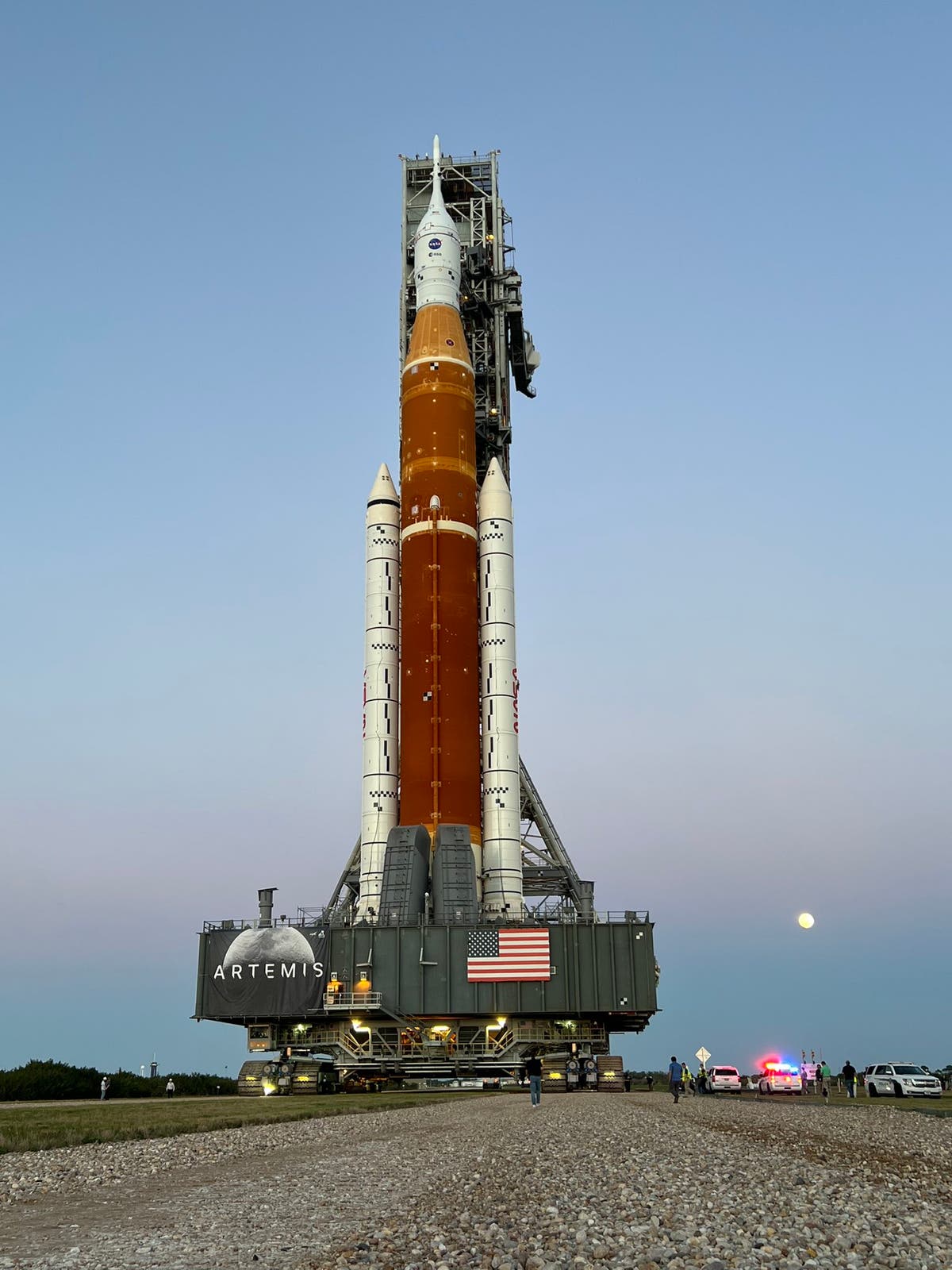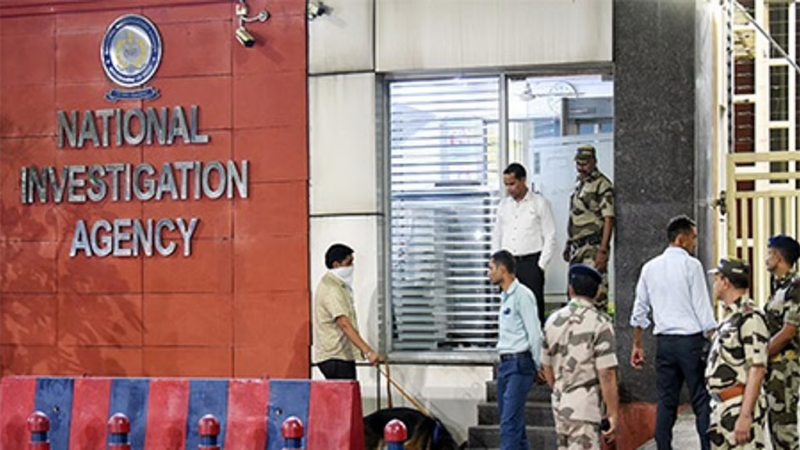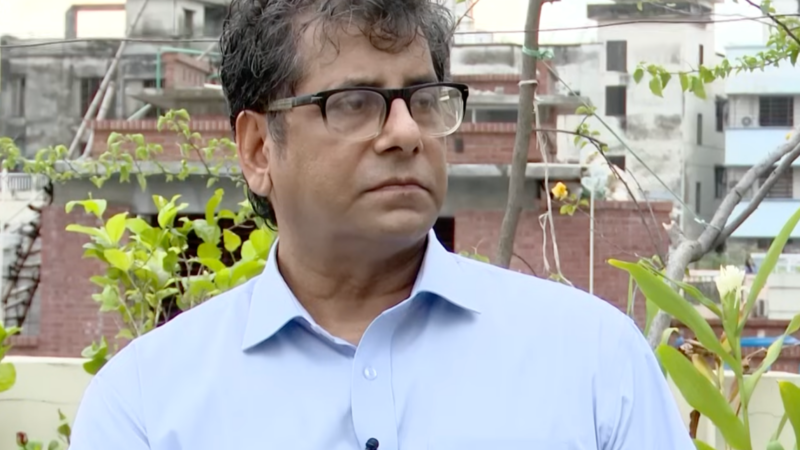What’s next in space: Nasa fuels its Moon rocket

April will kick off with some major space milestones, as Nasa prepares to fuel and test its new Moonrocket, the first private space crew blasts off for the International Space Station, and Boeing prepares for a do-over on an orbital test flight for its Starliner spacecraft.
Nasa’s SLS and Orion – 1 April
On Friday, pending a weather forecast without major thunderstorms, Nasa will begin the “wet dress rehearsal” of its Space Launch System (SLS) Moon rocket and the Orion spacecraft at its apex. The rocket and spacecraft together make up the core of Nasa’s Artemis program, which aims to return humans to the Moon with the Artemis III mission planned for 2025.
The space agency rolled the 322-foot-tall rocket out of the Vehicle Assembly Building at Kennedy Space Center on 17 March to complete final testing on launchpad 39B before a test flight, the uncrewed Artemis I mission, later this year. The testing involves pumping cryogenic fuel into the rocket, testing countdown, and other systems, and then recovering the fuel and liquid oxygen from the launch vehicle, which is why it’s called a “wet” dress rehearsal for launch.
After the wet dress rehearsal, Nasa will roll the SLS back into the Vehicle Assembly Building for final assessments and determination of the Artemis I launch data — the space agency is currently considering launch windows in May, June, and July.
If Artemis I can blast off this year, Artemis II, a crewed mission to orbit the Moon, is scheduled for May 2024.
SpaceX Falcon 9 carries Axiom-1 – 6 April
While the Artemis team completes the wet dress rehearsal of the SLS on launchpad 39B at Cape Canaveral, a SpaceX Falcon 9 rocket topped with a SpaceX Crew Dragon capsule will prepare to lift off from launch pad 39A. Axiom-1, the first ever fully private space mission to the ISS, is scheduled to lift off at 12:05 p.m. Eastern on Wednesday, 6 April.
Axiom Space is a commercial space station company developing a new module for the International Space Station, a module the company hopes to add on to and eventually detach to become a stand alone, private space station by the time the ISS is retired in 2030.
While Axiom is developing its space station, it plans to send regular flights of commercial space crews to the ISS to aid in the module development and to participate in space tourism. Axiom-1 will be the first such mission.
The crew of Axiom-1 includes former Nasa astronaut Michael López-Alegría as mission commander, Canadian investment banker Mark Pathy as a mission specialist, Larry Connor, an education nonprofit executive from Ohio as the mission pilot, while Israeli Air Force veteran and businessman Eytan Stibbe also serve as a mission specialist. The four crew will spend eight days aboard the ISS before returning to Earth.
While a SpaceX dragon capsule will take the Axiom-2 crew to the ISS, its competitor will get a second shot at an uncrewed flight to the space station sometime in the next month and a half.
Boeing’s OST-2 – early April
Nasa awarded two companies with contracts for its commercial crew program to fly astronauts to the ISS, SpaceX and Boeing. But while SpaceX began regular service with Crew Dragon in 2020, Boeing’s Strainer spacecraft ran into a computer glitch during its 2019 orbital test flight that prevented the uncrewed spacecraft from docking with the space station.
A second shot at that test flight, a mission enumerated as OST-2, was further delayed in August and was rescheduled for 20 May. According to reporting by Spaceflight Now, however, a change in the launch schedule of a Space Force payload could allow OST-2 to launch aboard a United Launch Alliance Atlas V rocket in the first half of April.






